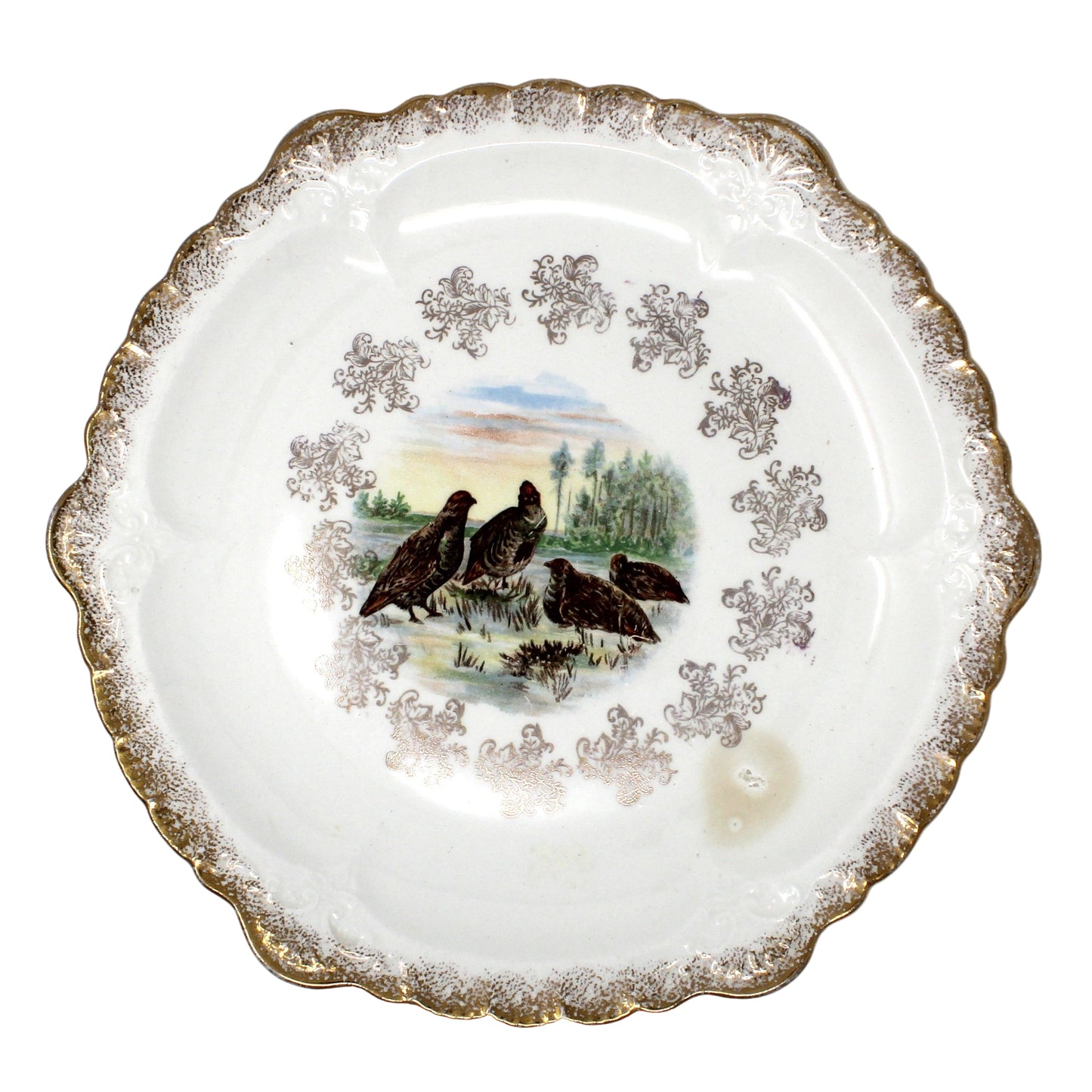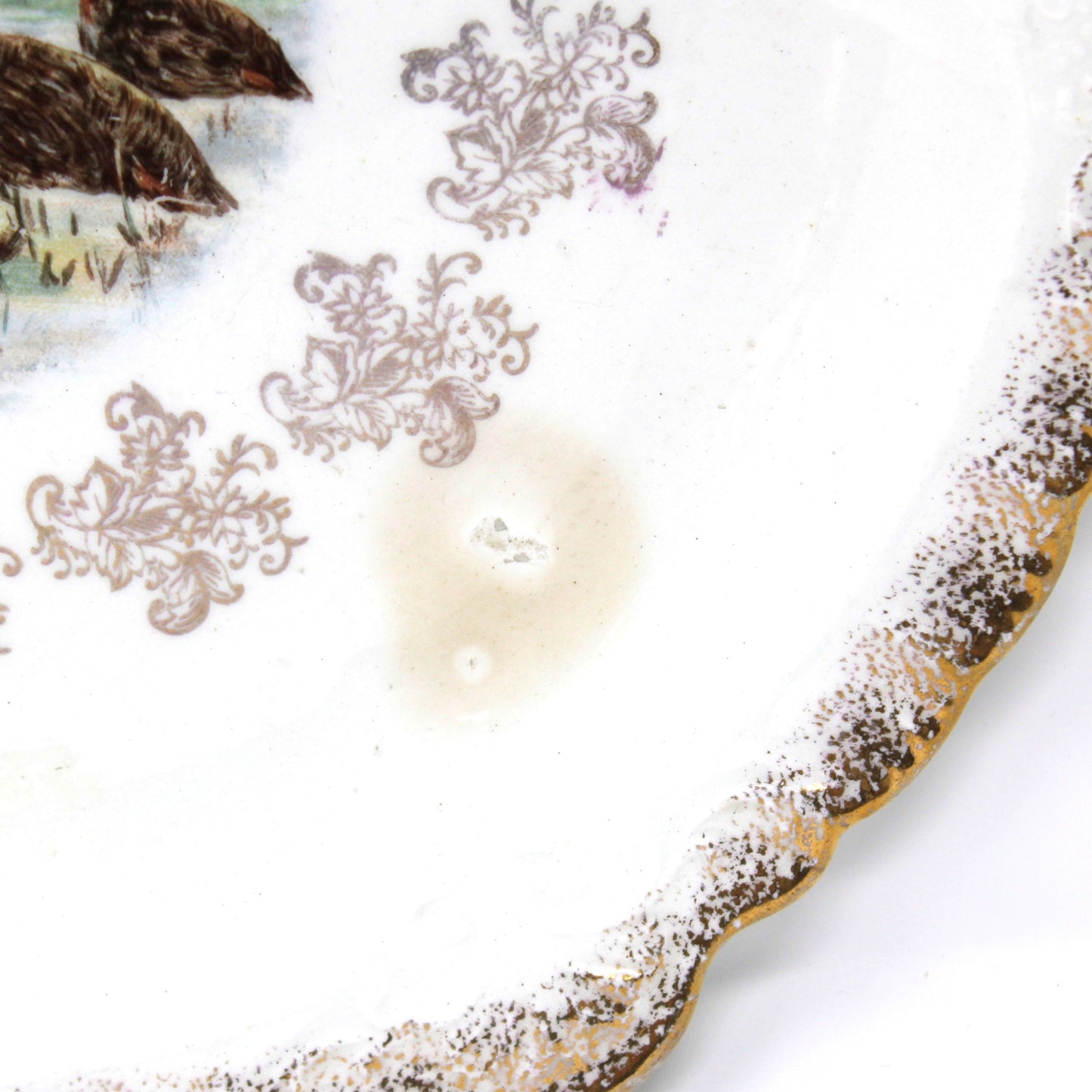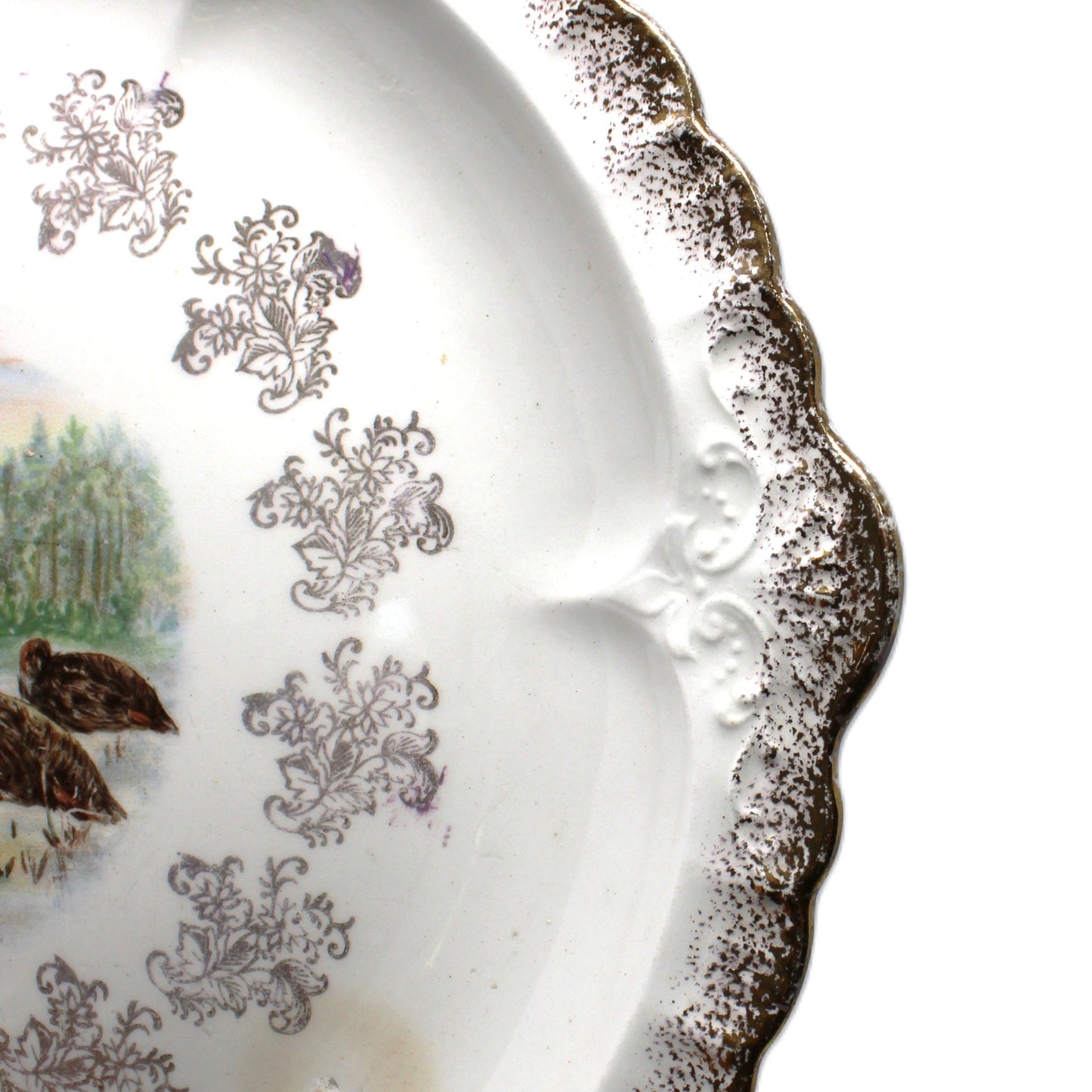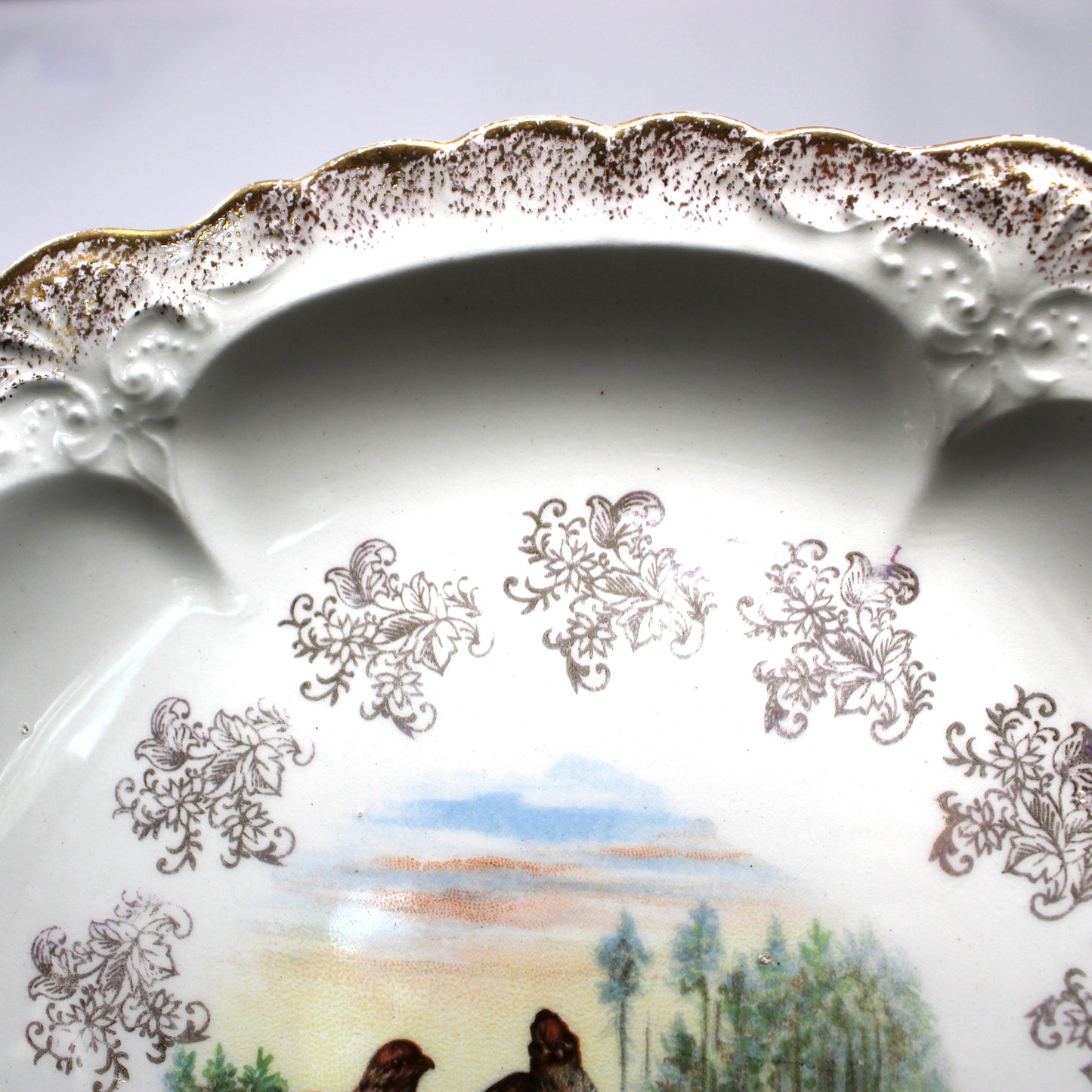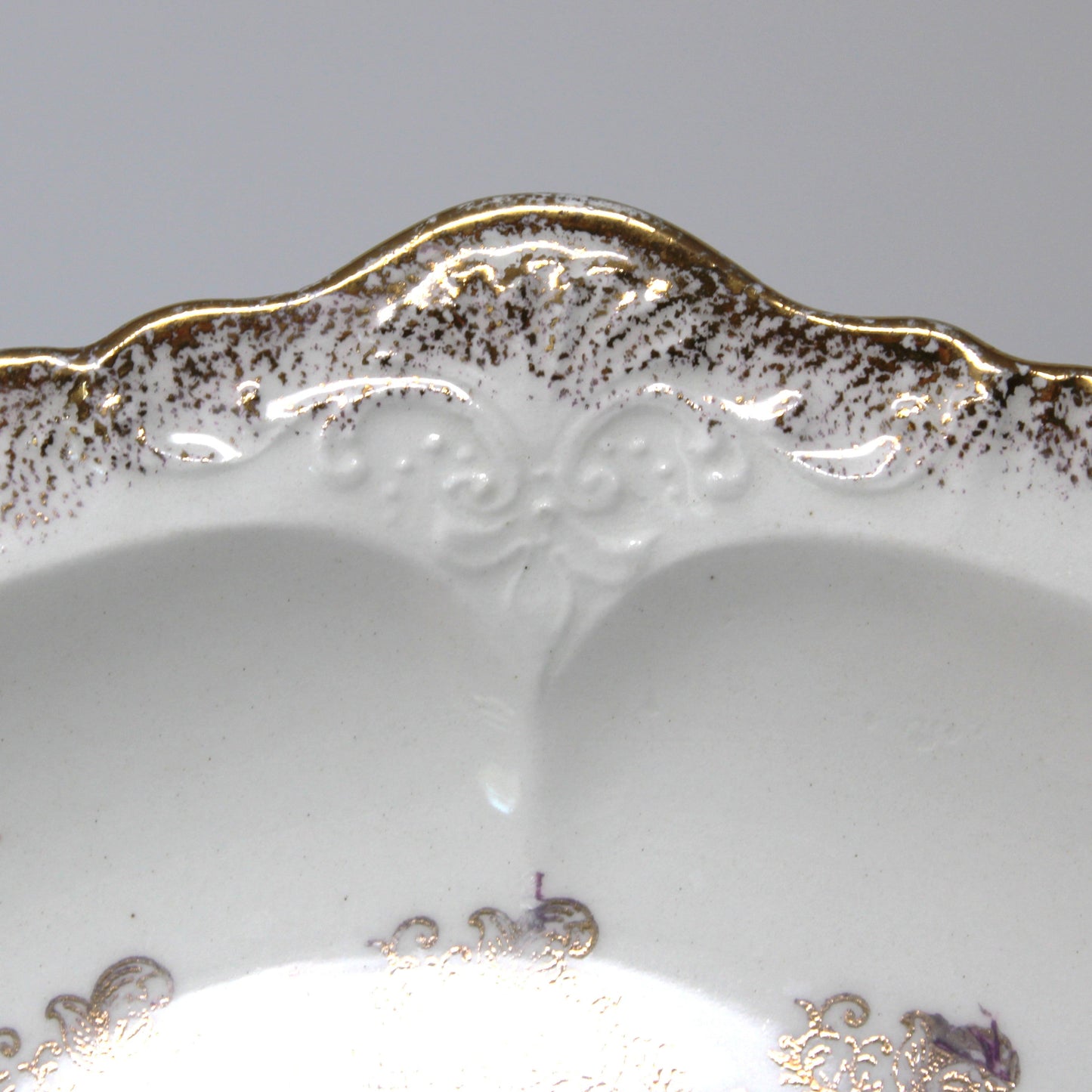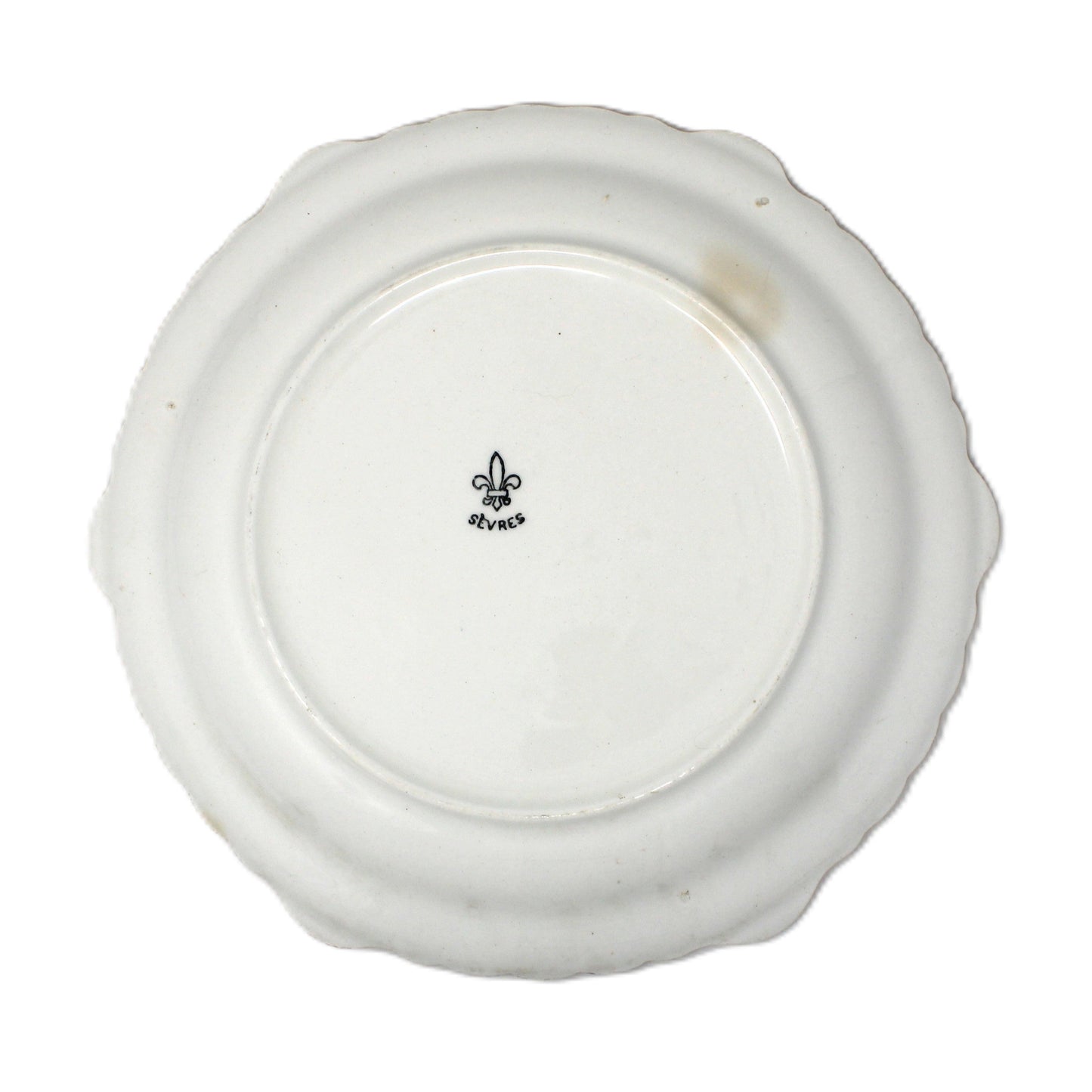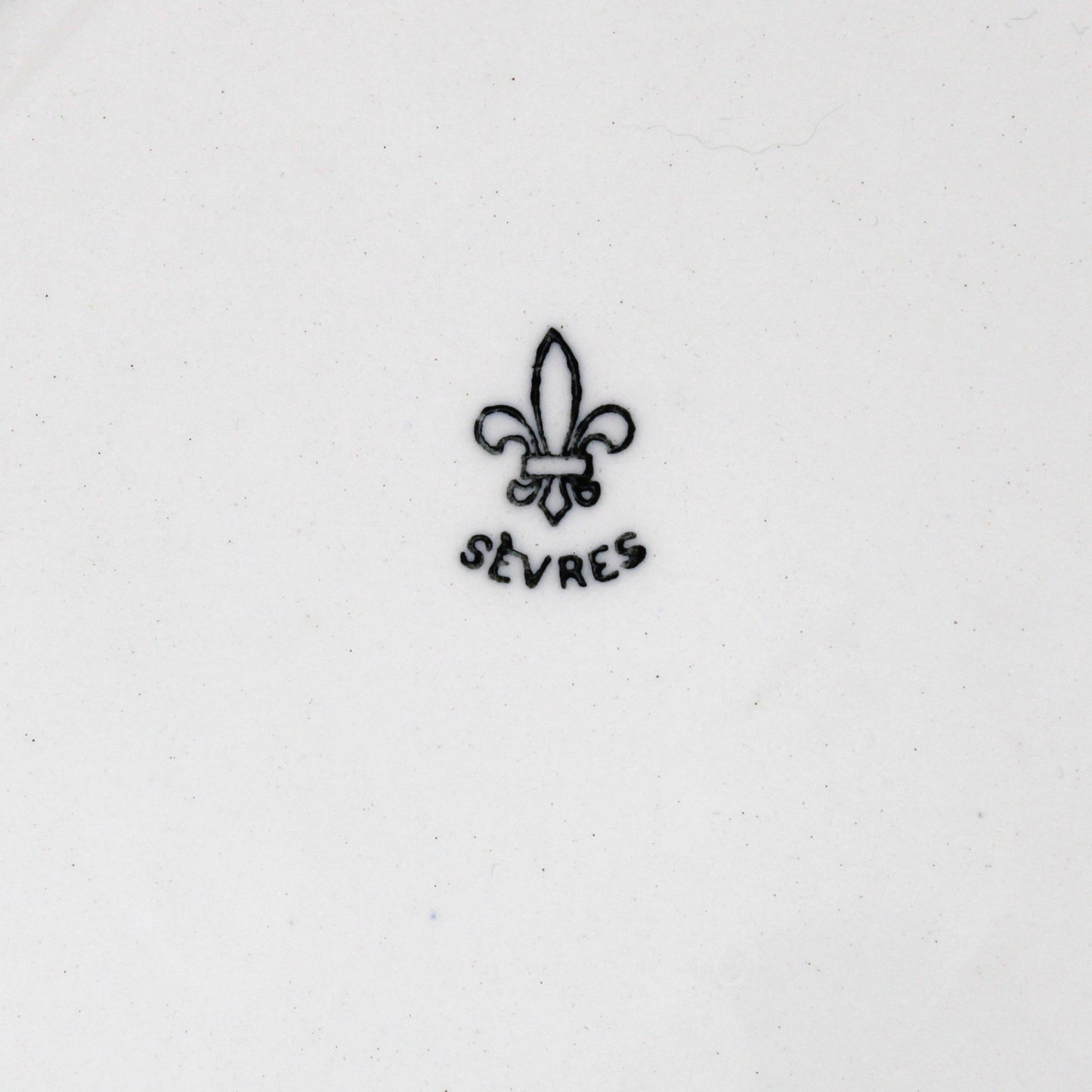Sèvres
Decorative Plate, Sevres, Woodland Animals, Game Birds, Grouse, French Antique
Decorative Plate, Sevres, Woodland Animals, Game Birds, Grouse, French Antique
Couldn't load pickup availability
- Antique Decorative Plate, Hand Painted Game Birds, Ruffed Grouse, Cabinet Plate, Sevres French Porcelain, Woodland Animals / Hunting Theme, Home Decor, Maximalist, Traditional Decor, (Retired)
- Made in France
- Antique: Fleur-de-lis Mark circa 1830
- Details: An absolutely gorgeous decorative plate from French porcelain manufacturer, Sèvres. It is hand painted with a woodland scene, a gathering of grouse in the center and gold floral stamping on the verge. All in lovely pastel tones with an embossed border and a stippled gold rim. The plate is marked with the Sèvres Fleur-de-lis Mark, which dates it to 1830. There are no pre-drilled holes, you'll need a plate hanger or stand to display it. This piece is approximately 195 years old, a true treasure and in excellent condition for its age! We carry many other decorative plates, if you would like 3 or more Decorative Plates (mix and match from our entire Decorative Plates section), please Contact Us for 20% off, don't forget to let us know which 3 plates you would like. Orders over $100 ship free (Continental US only).
- Material: Porcelain
- Dimensions: 10.5 inches in Diameter
- Condition: Antique - Used. Very Good Condition considering its age. We could find no chips, cracks, or scratches on this piece. Some pottery imperfections, dimples, one larger one in lower front, yellowed, photographed for you, acceptable due to age/use/wear. Please review all pictures and make sure you love this item before purchasing, we can't accept returns. Please remember these are VINTAGE and ANTIQUE items, they are NOT new, every effort has been made to show scratches, wear and tear and imperfections.
Sèvres was founded in 1738, by Marquis Orry de Fulvy, after he obtained a license to manufacture porcelain from King Louis XV. The king had wanted to create soft paste porcelain like Meissen and was finally successful with his "Manufacture Royale", originally in Vincennes, France. In 1751 Marquis Orry de Fulvy died and the king obtained 25 percent of the factory. In 1756 the factory was moved to the village of Sèvres, turns out Madame de Pompadour, the kings' mistress, wanted it near her Bellevue castle. In 1759, King Louis XV took over the entire Sèvres porcelain factory. In 1768, two researchers discovered the first French deposit of kaolin near Limoges, this allowed them to start making hard paste porcelain, introduced in 1772. The company was in serious financial trouble after the French Revolution (1789), because their porcelain had only been made for aristocracy and royal families, and the revolution ended the monarchy in France. Finally in 1798 the company was overtaken by the French government, who appointed Alexander Brongniart to run the business, he began to cater to a new group of wealthy clients. The company continued to thrive, (even Napoleon was a connoisseur of Sèvres porcelain). After more than 287 years, the "Manufacture Nationale de Sèvres" is still one of the principal European porcelain makers.
Share
